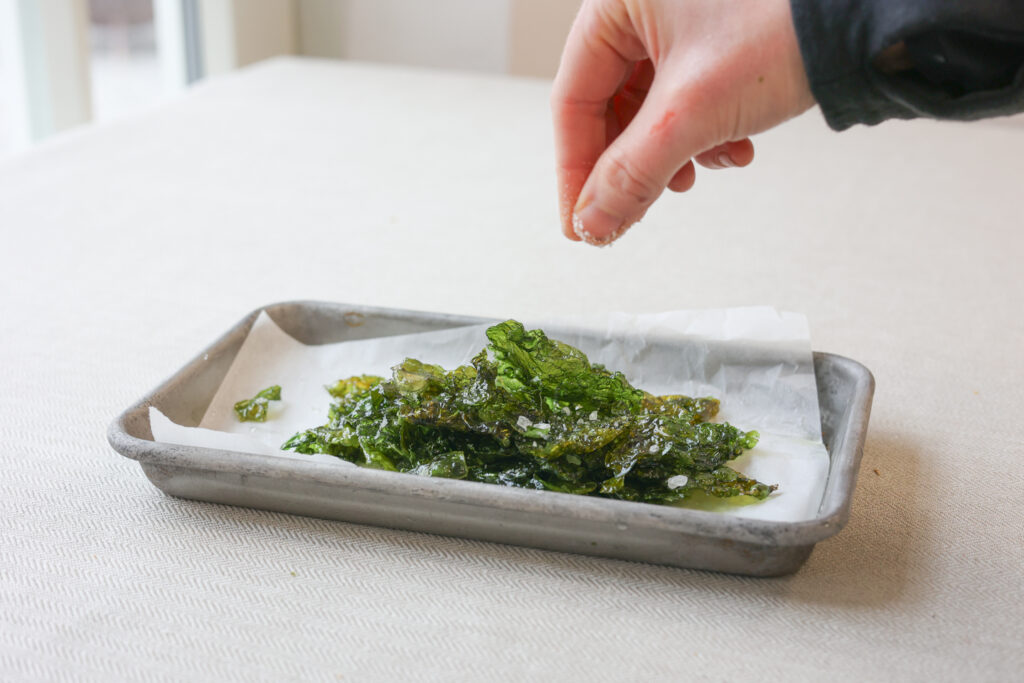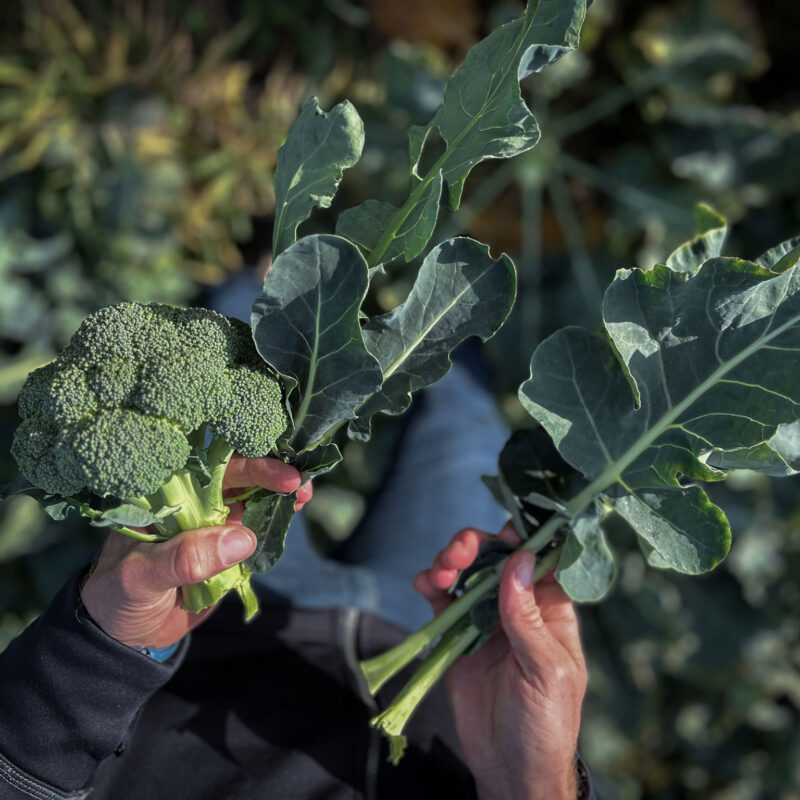Seaweed: A Hidden Resource Beneath the Surface
2025.05.19

Swedish seaweed farming is still small, but growing. Good natural conditions for farming and increased engagement in seaweed as an ingredient shows potential. Image: Nordic SeaFarm.
Beneath the surface lies a valuable resource, with the potential to play an important role in the food systems of the future. Seaweed is sustainable, resource efficient and incredibly versatile – yet in Sweden, its potential remains largely untapped. Knowledge about seaweed’s nutritional values and uses is limited in many European contexts, and its taste is unfamiliar to most. The SensAlg project explores how Swedish-grown seaweed can make the journey from sea to plate at a time when food security and resource efficient alternatives are becoming more important.
Could Seaweed Be Our Greatest Untapped Resource?
Globally, there are estimated to be over 70,000 species of algae, in a wide variety of colors, shapes, and textures. Seaweed is the common name for perennial macroalgae, and often refers to brown algae such as sugar kelp and bladderwrack, but also some red and green algae. This underwater crop contains nutrients such as protein, fiber, omega-3 fatty acids, and several minerals and vitamins. Some species, like sea lettuce, even contain biologically active vitamin B12 – a nutrient that is otherwise very rare in plant-based foods.
Seaweed grows rapidly without requiring freshwater, fertilizers, or arable land – making it a low-impact resource with high regenerative potential that doesn’t strain the planet’s limited natural resources. It also plays a key role in marine ecosystems by improving water quality through the uptake of nutrients like nitrogen and phosphorus from the ocean. Additionally, seaweed provides vital habitats for many marine species and organisms living beneath the surface. New applications and uses are emerging – primarily in food products, but also in areas such as animal feed, packaging, cosmetics, and bioenergy. So why is this nutritious and resource-efficient underwater crop still so underutilized in Sweden and Europe? Besides a lack of regional infrastructure for cultivation and processing, the main reason is a lack of demand – simply because most people don’t like the taste.

Harvesting sugar kelp at Nordic SeaFarm’s cultivation site on Sweden’s west coast. Image: Nordic SeaFarm.
Sensory Research and Product Development with Swedish-Grown Seaweed
The challenge of the low awareness of seaweed’s benefits and the limited regional demand – is what the SensAlg project seeks to address. The project examines the sensory properties of seaweed – such as its taste, texture, aroma, and appearance – with the aim of increasing knowledge about how Swedish-grown seaweed should be handled from cultivation to food product to be able to promote consumption. Axfoundation’s role in the project, led by Uppsala University and involving a broad partner network, has included developing and testing products with Swedish seaweed at Torsåker Farm, Axfoundations development center for future food and materials. The focus has been on integrating 10–20 percent frozen or fresh seaweed into the products, and not just using seaweed as a seasoning.
Two species of seaweed were selected for product development: sugar kelp and sea lettuce. Sugar kelp provides stable, reliable harvests, while sea lettuce, with its slightly milder sea-flavor, is particularly suitable for new consumers that are more sensitive to the taste.

Sugar kelp (Saccharina latissima) is the most cultivated seaweed species in Sweden, according to 2022 figures. Image: Nordic SeaFarm
Seaweed in Practice: From Smoothie to Soup
In Sweden, there’s no long tradition of eating seaweed, and Axfoundation has been trying to find Swedish contexts and products where it could fit in, both in terms of taste and texture. After product development at Torsåker Farm, several dishes were tested in tasting sessions at a school in Uppsala in spring 2025. Two products stood out: a refreshing blueberry and seaweed smoothie made entirely from Swedish ingredients, and a hearty, vegan bouillabaisse. The results showed that seaweed is not only nutritious and sustainable – it can also be incredibly tasty, offering a sea-inspired flavor experience without animal products.
One challenge with seaweed is the color – it oxidizes and turns brown when it comes into contact with acid, which makes it virtually impossible to maintain a green color in something like a smoothie. That’s why we decided to combine seaweed with something that works well both in terms of appearance and flavour, and we landed on a blueberry and cinnamon smoothie – flavors that also balance and soften the oceanic notes of the seaweed.
- Sofia Lundvall, Chef and Meal Coordinator at Torsåker Farm.

Vegan bouillabaisse developed at Torsåker Farm, containing 15 percent sugar kelp.

Blueberry and seaweed smoothie, made from Swedish ingredients and was tested by children at a school in Uppsala with positive results.
Europe’s Seaweed Farming in Transition
Even though global seaweed production has tripled since 2000, 99 percent of all seaweed is farmed in Asia. There, cultivation is well-established and a vital source of income in many coastal communities, with a long tradition of both consumption and processing. In Europe, seaweed farming is still in its early stages. Wild harvesting dominates, and development of seaweed farms has been hampered by complex permitting processes, technical and economic challenges, and weak value chain integration. But the conditions are promising. Cold, nutrient-rich waters are well-suited for cultivation, demand for seaweed-based products is rising, and political initiatives like the EU Green Deal are creating new opportunities for a sustainable regional seaweed industry. A report from Seaweed for Europe estimates that European production could grow from today’s 300,000 tons to 8 million tons per year – creating around 115,000 new jobs.

The bright green sea lettuce (Ulva fenestrata) naturally grows on rocks and stones along the west coast and in the Baltic Sea but can also be cultivated on ropes and in tanks. Image: Nordic SeaFarm.
Sweden’s Emerging Blue Economy
In Sweden, seaweed farming is still small, but growing. With good natural conditions for farming – such as the country’s long coastline and good water quality – and an increasing number of engaged stakeholders, interest in seaweed is rising along the entire food value chain. But for seaweed to take its place as a natural ingredient in the future, more is needed beyond collaboration, developed infrastructure and farming. Continued product development is important. By combining research with practical application, SensAlg aims to show that it’s possible to make Swedish seaweed accessible, appealing, and in demand in the food system.

Fried sea lettuce chips made from Swedish-grown sea lettuce – an example of how seaweed can become part of the future food system.
























































